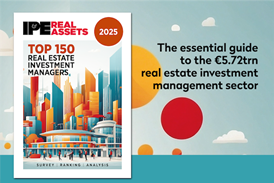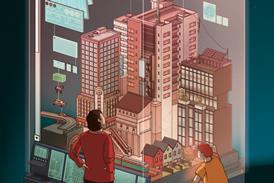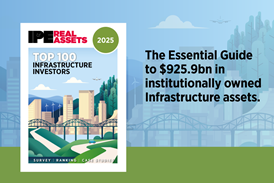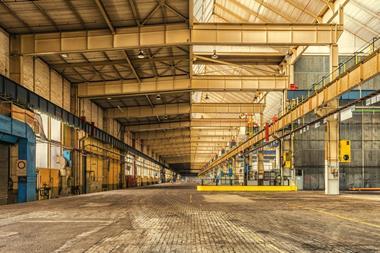Logistics real estate investors must do more than just build warehouses; they need to develop custom, tech-enabled spaces that are part of a wider ecosystem, writes Bert Hesselink
Europe has woken up to the importance of defence after years of torpor. Alarmed by growing geopolitical instability and threats, investment in defence is to be ramped up across NATO-aligned nations with almost all now promising to spend 5% of GDP on defence by 2035.

This is set to have a profound impact on the continent’s industrial and logistics (I&L) sector, as the productive capacity of everything from artillery to drones, missile systems, and their components, to storage and maintenance, involves I&L space.
To illustrate the sheer scale of new commitments to defence spending, Germany, the continent’s largest economy, has pledged to invest 3.5% of GDP in defence by 2029, funded by a €400bn borrowing programme, while the EU recently agreed to a €150bn defence loan fund.
Already, a reinvigorated defence industry is impacting I&L operators. We’re seeing increased enquiries and demand for warehouse space across our portfolio from firms in defence-related industries.
We expect this to continue to ramp up rapidly, especially as to win many contracts linked to national government investment in defence, businesses need to show they have the necessary production space and capacity in place to deliver.
Which locations will see demand?
Central & Eastern Europe (CEE) in particular looks set to benefit from EU governments’ defence push. Over the last three decades, CEE has become Europe’s manufacturing hub and a strategic location for advanced manufacturing. Driving this is its proximity to Western European markets, rapidly improving infrastructure – now approaching, if not exceeding Western European standards by some measures, and strong labour fundamentals, with a skilled, productive and cost-competitive workforce all within the EU, making the region attractive to international businesses.
German manufacturers, including Continental and BOSCH, were among the pioneering international businesses to set up plants in the CEE. Others from across Europe and beyond have followed. This, combined with a strong tradition in engineering technology, including educational institutions, has resulted in clusters of manufacturing excellence with interconnected supply chains. As a result, countries such as the Czech Republic, Slovakia and Poland are now home to leading defence-adjacent manufacturers, including in aerospace and heavy engineering.
CEE has also become a prime beneficiary of the nearshoring of supply chains to Europe, as multinationals locate their production operations closer to where their end customers are located, looking to reduce risks to supply chains following the pandemic, rising protectionism and geopolitical tensions. These are all important risks that must be mitigated against, especially for defence manufacturers. CEE’s economic, geographic and infrastructure advantages, proximity to NATO key operations, and deep integration with Europe’s industrial base make the region an obvious choice for many defence manufacturers.
The right kind of I&L real estate
Location, however, is only one piece of the puzzle. Developers and investors targeting defence occupiers need the skillset and flexibility to ensure properties can match often very specific end-user requirements - many traditional I&L properties will be unsuitable. Big box logistics warehouses originally designed for e-commerce for example, often lack the heavy-duty load capacity or large-format loading bays needed for military-grade operations. From aerospace components and drone assembly to the storage of military munitions, what I&L space may have to deliver from a technical perspective can vary greatly.
The specific requirements of the defence sector can also require build-to-suit capability, meaning consulting, designing and building, high-tech, sustainable assets, matching the occupier’s requirements. Most defence firms also choose not to commit capital investment to real estate – they instead look for a landlord able to operate and actively manage their buildings. Many also need flexible leases and the ability to shift the location of production quickly. Landlords with extensive I&L park networks will be best placed offer clients the option of shorter leases and the ease of moving to new locations within their network, maintaining greater liquidity.
Real estate owners able to support defence firms with access to skilled local supply chains and space for future growth should also benefit. CTP, as Europe’s largest I&L developer and operator by GLA, already has a network of established parks across CEE, and increasingly in Germany, plugged into key manufacturing hubs and supply chains. This is backed by a 26m sqm landbank which includes undeveloped land at existing parks, meaning we are ready to expand existing client operations and build new ones.
With the fundamental shift of the geopolitical landscape and European governments’ long-term project to boost and secure the continent’s defence industrial infrastructure, the defence sector is set to be a major driving force in demand for I&L real estate. CEE offers a rare combination of optimum geographic location, investment stability and scalability, making its attractiveness for defence contractors, OEMs, as well as logistics operators difficult to ignore. But logistics real estate investors must be aware that success will mean not just building warehouses, but also having the capability to develop bespoke technologically fit spaces that are part of a wider ecosystem.
To read the latest IPE Real Assets magazine click here.












